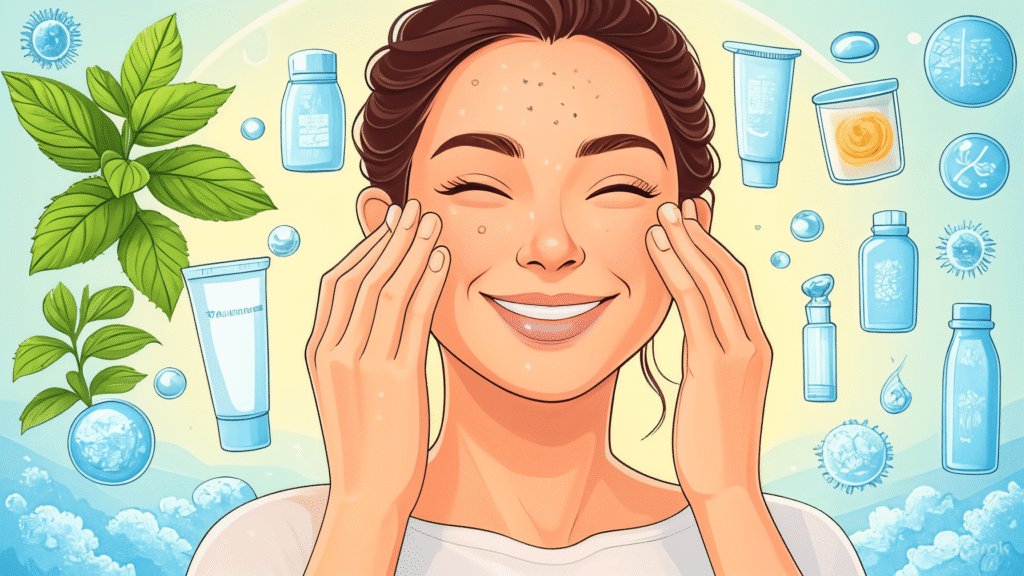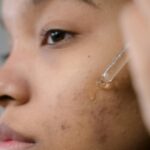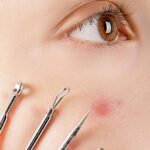Nodular acne represents one of the most challenging and painful forms of severe acne, affecting millions of people worldwide. These deep, inflammatory lesions can cause significant physical discomfort and emotional distress, making effective pain management crucial for those dealing with this condition. If you’re struggling with painful acne nodules, this comprehensive guide will provide you with evidence-based strategies to find relief while protecting your skin from permanent scarring.
What is Nodular Acne?
Nodular acne is a severe form of inflammatory acne characterized by large, hard, painful lumps that develop deep beneath the skin’s surface. Unlike typical pimples or blackheads, acne nodules form when blocked pores become severely infected and inflamed, creating firm, tender masses that can persist for weeks or even months.
These painful acne lesions typically measure 1-2 centimeters in diameter and feel like hard knots under the skin. Unlike cystic acne, which contains pus, nodular acne consists primarily of inflamed tissue, making it particularly resistant to over-the-counter treatments and prone to causing permanent scarring if not properly managed.
Key Characteristics of Nodular Acne:
- Deep, painful lumps under the skin
- Firm, hard texture without visible pus
- Red or skin-colored appearance
- Slow to heal (weeks to months)
- High risk of scarring
- Often affects face, back, chest, and shoulders
Understanding the Causes of Nodular Acne
Before diving into pain relief strategies, it’s essential to understand what triggers nodular acne formation. This knowledge helps inform both treatment and prevention approaches.
Primary Causes:
- Hormonal fluctuations: Androgens increase oil production, particularly during puberty, menstruation, and pregnancy
- Genetics: Family history significantly increases risk
- Bacterial overgrowth: Cutibacterium acnes (C. acnes) bacteria multiply in blocked pores
- Excessive sebum production: Overactive oil glands create ideal conditions for blockages
- Dead skin cell accumulation: Poor cell turnover leads to pore blockages
Contributing Factors:
- Stress and lack of sleep
- Certain medications (corticosteroids, lithium)
- Dietary factors (high glycemic foods, dairy products)
- Harsh skincare products
- Excessive sweating and humidity
10 Evidence-Based Pain Relief Tips for Nodular Acne
1. Start with Gentle Cleansing
Why it matters: Proper cleansing removes excess oil, bacteria, and dead skin cells without irritating inflamed nodules.
How to do it:
- Use a mild, non-comedogenic cleanser twice daily
- Apply with clean hands using gentle circular motions
- Rinse with lukewarm water (hot water increases inflammation)
- Pat dry with a clean towel—never rub
Recommended ingredients: Look for cleansers containing salicylic acid (0.5-2%) or benzoyl peroxide (2.5%) for their anti-inflammatory properties.
2. Apply Cold Therapy for Immediate Relief
Why it works: Cold temperatures reduce inflammation, numb pain, and constrict blood vessels to minimize swelling.
Application method:
- Wrap ice cubes in a clean cloth or use a cold compress
- Apply to affected areas for 10-15 minutes
- Repeat 2-3 times daily during acute flare-ups
- Never apply ice directly to skin
Pro tip: Keep gel ice packs in your freezer for convenient, reusable cold therapy.
3. Use Warm Compresses to Promote Healing
The science: Heat increases blood circulation, bringing healing nutrients to the area and helping reduce deep inflammation.
Proper technique:
- Soak a clean washcloth in warm (not hot) water
- Apply to nodules for 10-15 minutes
- Repeat 3-4 times daily
- Ensure the cloth is clean each time to prevent bacterial spread
When to use: Warm compresses work best for mature nodules that have been present for several days.
4. Resist the Urge to Pick or Squeeze
Critical importance: Picking at nodular acne can push bacteria deeper into the skin, worsen inflammation, and guarantee permanent scarring.
Strategies to avoid picking:
- Keep fingernails short and clean
- Use hydrocolloid patches to cover tempting spots
- Practice stress-reduction techniques
- Keep hands busy with fidget tools or stress balls
- Apply topical treatments immediately when you feel the urge to pick
5. Incorporate Benzoyl Peroxide Strategically
How it helps: Benzoyl peroxide kills acne-causing bacteria, reduces inflammation, and helps prevent new nodules from forming.
Application guidelines:
- Start with 2.5% concentration to minimize irritation
- Apply once daily initially, gradually increasing to twice daily
- Use as a spot treatment rather than all-over application
- Always follow with moisturizer to prevent excessive dryness
Important note: Benzoyl peroxide can bleach fabrics, so use white towels and pillowcases.
6. Avoid Harmful Ingredients and Practices
Ingredients to avoid:
- Alcohol-based toners (cause excessive drying)
- Harsh scrubs or exfoliants
- Toothpaste (despite popular myths, it’s too harsh)
- Products with menthol or peppermint (can irritate)
- Oil-based cosmetics and hair products
Harmful practices:
- Over-washing (more than twice daily)
- Using multiple acne treatments simultaneously
- Applying treatments to broken or severely irritated skin
7. Protect Your Skin from Sun Damage
Why sun protection matters: UV exposure can worsen inflammation, delay healing, and increase the risk of post-inflammatory hyperpigmentation.
Sun protection strategies:
- Use broad-spectrum SPF 30+ sunscreen daily
- Choose non-comedogenic, mineral-based formulas
- Reapply every 2 hours when outdoors
- Wear protective clothing and wide-brimmed hats
- Seek shade during peak UV hours (10 AM – 4 PM)
8. Implement Stress Management Techniques
The stress-acne connection: Chronic stress increases cortisol production, which can worsen hormonal acne and slow healing.
Effective stress reduction methods:
- Practice mindfulness meditation (10-15 minutes daily)
- Engage in regular exercise (releases endorphins)
- Maintain consistent sleep schedule (7-9 hours nightly)
- Try deep breathing exercises during stressful moments
- Consider yoga or tai chi for mind-body wellness
9. Optimize Your Diet for Skin Health
Dietary factors that may help:
- Anti-inflammatory foods: Fatty fish, leafy greens, berries, nuts
- Low glycemic options: Whole grains, legumes, vegetables
- Adequate hydration: 8-10 glasses of water daily
- Zinc-rich foods: Pumpkin seeds, chickpeas, cashews
Foods to limit:
- High glycemic foods (white bread, sugary snacks)
- Dairy products (may worsen hormonal acne in some individuals)
- Processed foods high in trans fats
- Excessive caffeine and alcohol
10. Seek Professional Dermatological Care
When to see a dermatologist:
- Nodules persist for more than 2-3 weeks
- Pain significantly impacts daily activities
- Signs of infection (increased redness, warmth, pus)
- Multiple nodules or widespread severe acne
- Previous scarring from acne
Professional treatment options:
- Cortisone injections: Rapid reduction of inflammation and pain
- Oral isotretinoin: Most effective treatment for severe nodular acne
- Oral antibiotics: Reduce bacterial load and inflammation
- Prescription topicals: Stronger retinoids and combination therapies
Advanced Treatment Strategies for Severe Cases
Combination Therapy Approaches
For persistent nodular acne, dermatologists often recommend combination treatments that address multiple factors simultaneously:
- Topical retinoids + benzoyl peroxide: Prevents new lesions while treating existing ones
- Oral antibiotics + topical treatments: Reduces bacteria and inflammation from multiple angles
- Hormonal therapy + topical care: Particularly effective for women with hormonal acne
Emerging Treatment Options
- Light therapy: Blue and red light treatments can reduce bacteria and inflammation
- Chemical peels: Professional-grade peels help prevent pore blockages
- Laser therapy: Targets deep inflammation and can improve scarring
Long-Term Management and Prevention
Maintenance Skincare Routine
Morning routine:
- Gentle cleanser
- Topical treatment (if prescribed)
- Moisturizer with SPF
- Makeup (non-comedogenic only)
Evening routine:
- Remove makeup/sunscreen
- Gentle cleanser
- Treatment products
- Moisturizer
Lifestyle Modifications for Prevention
- Regular exercise: Improves circulation and reduces stress
- Consistent sleep schedule: Supports hormonal balance
- Clean pillowcases: Change 2-3 times weekly
- Phone hygiene: Clean device screens daily
- Hair care: Keep hair products away from face
Managing the Emotional Impact
Nodular acne can significantly affect self-esteem and mental health. Consider these strategies:
- Support groups: Connect with others facing similar challenges
- Professional counseling: Helps develop coping strategies
- Realistic expectations: Understand that treatment takes time
- Focus on overall health: Maintain perspective on your worth beyond appearance
Cost-Effective Treatment Considerations
Insurance Coverage Tips:
- Document severity with photos for insurance claims
- Ask about generic alternatives for expensive medications
- Inquire about patient assistance programs for isotretinoin
- Consider dermatology residency clinics for reduced-cost care
Budget-Friendly Options:
- Generic benzoyl peroxide and salicylic acid products
- DIY warm compresses using household items
- Stress management through free apps and online resources
- Preventive measures to reduce need for expensive treatments
When to Seek Emergency Care
Contact a healthcare provider immediately if you experience:
- Signs of severe infection (fever, red streaking, severe pain)
- Allergic reactions to treatments (rash, difficulty breathing)
- Severe depression or suicidal thoughts related to acne
- Sudden worsening of multiple nodules
Frequently Asked Questions
How long does it take for nodular acne to heal?
Individual nodules typically take 2-8 weeks to resolve completely, depending on size and treatment. With proper professional treatment, most people see significant improvement within 3-6 months.
Can I use makeup with nodular acne?
Yes, but choose non-comedogenic, oil-free products. Mineral makeup is often best tolerated. Always remove makeup thoroughly and avoid heavy coverage over active nodules.
Is nodular acne contagious?
No, acne is not contagious. However, sharing towels, pillowcases, or makeup can spread bacteria that may worsen existing acne.
Will nodular acne leave permanent scars?
Without proper treatment, nodular acne has a high risk of causing permanent scarring. Early professional intervention significantly reduces this risk.
Can diet really affect nodular acne?
While diet isn’t the primary cause, some people find that limiting high glycemic foods and dairy products helps reduce inflammation and breakouts.
Take Action for Clearer, Healthier Skin
Nodular acne requires patience, consistency, and often professional intervention to manage effectively. While these pain relief strategies can provide significant comfort and support healing, remember that severe acne is a medical condition that benefits from dermatological expertise.
Don’t let painful nodular acne control your life. Start implementing these evidence-based strategies today, and don’t hesitate to seek professional help when needed. With the right approach, you can achieve clearer skin and regain your confidence.
Ready to take the next step? Schedule a consultation with a board-certified dermatologist to develop a personalized treatment plan that addresses your specific needs and goals. Your journey to clearer, healthier skin starts with taking action today.



